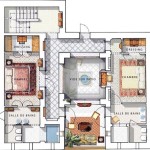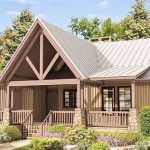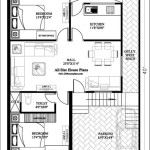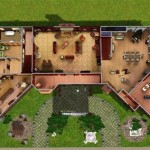Old House Plans in Kerala Style: A Detailed Exploration
Kerala architecture, deeply rooted in its geographical and cultural heritage, possesses a distinctive charm. The old house plans in Kerala style reflect a harmonious blend of tradition, functionality, and aesthetic appeal. These architectural designs, often passed down through generations, showcase a thoughtful approach to construction, climate adaptation, and the creation of comfortable living spaces. The principles and features that define these classic house plans continue to inspire contemporary designs, preserving a vital link to the region's architectural identity.
The defining characteristics of old Kerala house plans are significantly influenced by the region's tropical climate and readily available natural resources. Laterite stone, timber (especially teak), and clay tiles are integral components of the construction process. The design emphasizes ventilation, natural light, and the use of courtyards to regulate temperature and promote airflow. These elements collectively contribute to creating homes that are not only visually appealing but also exceptionally comfortable to inhabit, even in the humid Kerala climate.
The traditional Kerala house, also known as a "Nalukettu," is a quadrangular structure with a central courtyard open to the sky. This courtyard serves as the focal point of the house, providing natural light and ventilation to all surrounding rooms. The "Poomukham" (entrance verandah), with its characteristic sloping roof and ornate pillars, is another prominent feature. The "Chuttu Verandah," a covered walkway surrounding the house, offers protection from the elements and allows residents to move freely between rooms, sheltered from the sun and rain.
Key Features of Old Kerala House Plans
Several distinct features characterize old house plans in the Kerala style. These elements, developed over centuries, demonstrate a sophisticated understanding of architectural principles and their application to the local environment.
1. The Nalukettu: The Central Courtyard Design
The Nalukettu represents the quintessential element of traditional Kerala architecture. This quadrangular structure centers around an open courtyard, or "Nadumuttom," that acts as the heart of the house. The Nadumuttom serves multiple purposes, functioning as a gathering space for family members, a source of natural light and ventilation, and a rainwater harvesting area. The rooms surrounding the courtyard are interconnected, allowing for ease of movement and interaction. The Nadumuttom is often adorned with traditional carvings and plants, adding to its aesthetic appeal and creating a tranquil atmosphere. The size of the Nalukettu can vary depending on the family's needs and social standing, ranging from smaller structures to larger, more elaborate complexes.
The Nadumuttom's importance extends beyond its practical functions. It holds cultural and spiritual significance, often serving as a space for religious ceremonies and rituals. The open-air design allows for a connection with nature, fostering a sense of peace and harmony within the household. The positioning of the Nadumuttom is carefully considered, taking into account the cardinal directions and ensuring optimal sunlight exposure throughout the day. The design principles behind the Nalukettu demonstrate a deep understanding of the relationship between architecture, environment, and human well-being.
2. The Poomukham: The Grand Entrance Verandah
The Poomukham, or entrance verandah, serves as the welcoming face of the Kerala house. This covered space is typically located at the front of the house and is characterized by its sloping roof supported by intricately carved wooden pillars. The Poomukham provides a sheltered space for guests to be received and for residents to relax and enjoy the outdoors. The design of the Poomukham often incorporates traditional elements, such as wooden carvings depicting deities, floral motifs, and geometric patterns. These intricate details add to the aesthetic appeal of the house and reflect the region's rich artistic heritage.
The Poomukham's design also considers functionality. The sloping roof provides protection from the rain and sun, while the open sides allow for natural ventilation. The verandah is often furnished with traditional seating, such as wooden benches or chairs, creating a comfortable space for social interaction. The Poomukham's location at the front of the house allows for easy access to the outside world, while also providing a sense of privacy and security for the residents. The careful design and attention to detail make the Poomukham a defining feature of old Kerala house plans.
3. Material Choices: Laterite Stone, Timber, and Clay Tiles
The selection of building materials in old Kerala house plans is heavily influenced by the region's climate and the availability of local resources. Laterite stone, a porous and durable material, is commonly used for the foundation and walls of the house. Its natural insulation properties help to keep the interiors cool during the hot summer months. Timber, especially teak, is used extensively for the roof structure, pillars, doors, and windows. Teak is highly valued for its strength, durability, and resistance to decay, making it an ideal material for building in the humid Kerala climate.
Clay tiles, typically terracotta, are used for roofing. Their traditional interlocking design provides excellent water resistance and helps to insulate the house from heat. The reddish-brown hue of the clay tiles adds to the visual appeal of the house and complements the natural surroundings. The use of these locally sourced materials not only reduces the environmental impact of construction but also contributes to the unique character and aesthetic of old Kerala houses. The combination of laterite stone, timber, and clay tiles creates a durable, sustainable, and aesthetically pleasing building that is well-suited to the Kerala climate.
4. Emphasis on Ventilation and Natural Light
Old Kerala house plans inherently prioritize ventilation and natural light. The open courtyard design, as seen in the Nalukettu, is a key element in achieving this. The courtyard allows for cross-ventilation throughout the house, ensuring a constant flow of fresh air. Strategically placed windows and ventilators further enhance airflow, helping to regulate temperature and reduce humidity. The use of open spaces and large windows allows for ample natural light to enter the house, reducing the need for artificial lighting during the day. The orientation of the house is also carefully considered to maximize sunlight exposure and minimize heat gain.
The design principles that prioritize ventilation and natural light are crucial for creating comfortable and healthy living spaces in the tropical Kerala climate. By reducing reliance on artificial cooling and lighting, these design elements contribute to energy efficiency and sustainability. The emphasis on natural light also enhances the aesthetic appeal of the house, creating bright and inviting interiors. The combination of ventilation and natural light creates a comfortable and healthy indoor environment, promoting the well-being of the residents.
5. The Chuttu Verandah: The Covered Walkway
The Chuttu Verandah is a covered walkway that typically surrounds the house, providing a sheltered connection between the various rooms. This feature is especially important in Kerala's monsoon climate, as it allows residents to move freely between rooms without being exposed to the rain or sun. The Chuttu Verandah is typically supported by pillars and covered with a sloping roof, similar to the Poomukham. The design of the Chuttu Verandah often incorporates traditional elements, such as wooden carvings and decorative details. The width of the verandah can vary, depending on the size of the house and the needs of the residents.
The Chuttu Verandah serves as more than just a convenient walkway; it also functions as an extension of the living space. It can be used as a space for relaxation, recreation, or even as an outdoor dining area. The covered design provides protection from the elements, allowing residents to enjoy the outdoors regardless of the weather. The Chuttu Verandah also enhances the aesthetic appeal of the house, creating a sense of openness and connection with the surrounding landscape. The integration of the Chuttu Verandah into the overall design of the house demonstrates a thoughtful approach to creating functional and comfortable living spaces.
Adaptations in Contemporary Kerala Architecture
While old Kerala house plans provide a valuable framework, contemporary designs often incorporate modern materials and construction techniques while retaining the essence of the traditional style. Concrete is frequently used for the foundation and structural elements, while timber is still favored for its aesthetic appeal and sustainable properties. The open courtyard design is often adapted to suit smaller plots, with smaller courtyards or light wells providing natural light and ventilation.
Modern Kerala houses also incorporate contemporary amenities, such as modern kitchens, bathrooms, and electrical systems. However, the design principles of ventilation, natural light, and connection with nature remain central to the architectural approach. Many contemporary Kerala houses feature sloping roofs with clay tiles, large windows, and open floor plans, all inspired by the traditional style. By blending traditional elements with modern innovations, architects are able to create homes that are both functional and aesthetically pleasing, while also preserving the unique architectural heritage of Kerala.
The Enduring Legacy of Old Kerala House Plans
Old house plans in Kerala style represent a rich architectural tradition that continues to inspire and influence contemporary designs. The emphasis on natural materials, ventilation, natural light, and connection with nature creates homes that are both comfortable and sustainable. The intricate details and craftsmanship reflected in these traditional houses showcase the region's rich artistic heritage. The principles embodied in these old house plans offer valuable lessons for architects and designers seeking to create buildings that are both functional and aesthetically pleasing, while also being sensitive to the local environment and cultural context. The enduring legacy of old Kerala house plans lies in their ability to blend tradition and innovation, creating homes that are both timeless and relevant to the modern world.

Naturally Gifted Land Kerala Old Homes House Architecture Styles Exterior Design

Kerala House Designs Ideas In 2024

Naturally Gifted Land Kerala Old Homes House Design Traditional Plans

This Traditional Kerala House In Kairappally Is Perfect For A Modern Living Lifestyle Decor English Manorama

Kerala House Designs Ideas In 2024

Understanding A Traditional Kerala Styled House Design Happho

Kerala Vintage Village House Design Courtyard Plans Farmhouse

Kerala Traditional 3 Bedroom House Plan With Courtyard And Harmonious Ambience Home Planners

Kerala Traditional Home With Plan Design And Floor Plans 9k Dream Houses

Kerala House Designs 20 Simple And Modern Ideas 2024








